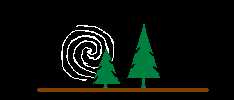Finally, a cloudy night that is ideal for astronomy!
Join us tonight, Saturday, July 18, 2015, at Brower Observatory to meet Norm Sperling, the co-inventor of the Edmund Astroscan telescope. History buffs know that this easily portable, wide-field telescope is among the most famous ever designed for amateurs. It requires no time to set it up, and is quite nearly as simple to use as binoculars. Many deep space objects pop easily into view in an Astroscan. It is ideal for beginners, yet also so useful and convenient that more advanced astronomers keep them in their arsenals long after buying more complex telescopes. For a quick view skyward, nothing beats an Astroscan!
CMAS has in its possession the prototype of this telescope, at Brower Observatory. It was designed, built, and donated by Stanley Brower. It is also somewhat of a mystery. We have never been certain the exact relationship between our prototype and the Astroscan sold commercially. Tonight, we’ll learn more after Norm inspects ours, and speaks about the Astroscan’s origins.
Here are links about Norm Sperling and his Astroscan:
https://en.wikipedia.org/wiki/Norman_Sperling
https://en.wikipedia.org/wiki/Astroscan
http://www.everythingintheuniverse.com/blog/astroscan-memories
If you’ll be joining us tonight, please call me on my cell phone for further details. (The number is in the email sent separately.)







Peter BoyceJune 25, 2012Lowell bought sereavl 24-inch telescopes which were deployed around the world to take pictures of planets on an hourly basis. These telescopes were located in Chile (CTIO), South Africa, and Australia, and maybe other places. They had a special seconday mirror which gave a long efective focal length (to produce large planetary images). I used the one in Chile in 1969 and 1971 to make observations of Mars. I think 5 telescopes were bought from B&C. The telescope in Chile arrived with a northern hemisphere drive, which means it drove backwards in the southern hmiphere. This was embarassing for B&C.Lowell also had B&C make a new declination drive for the 72-inch tlescope, which worked very well.